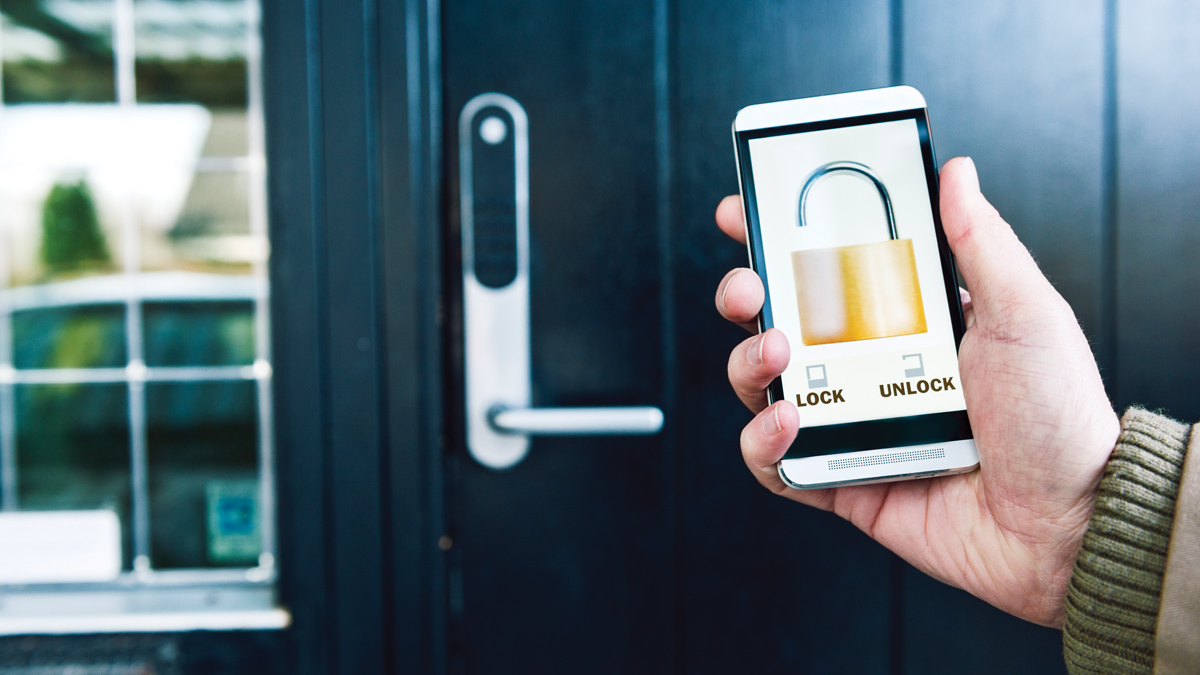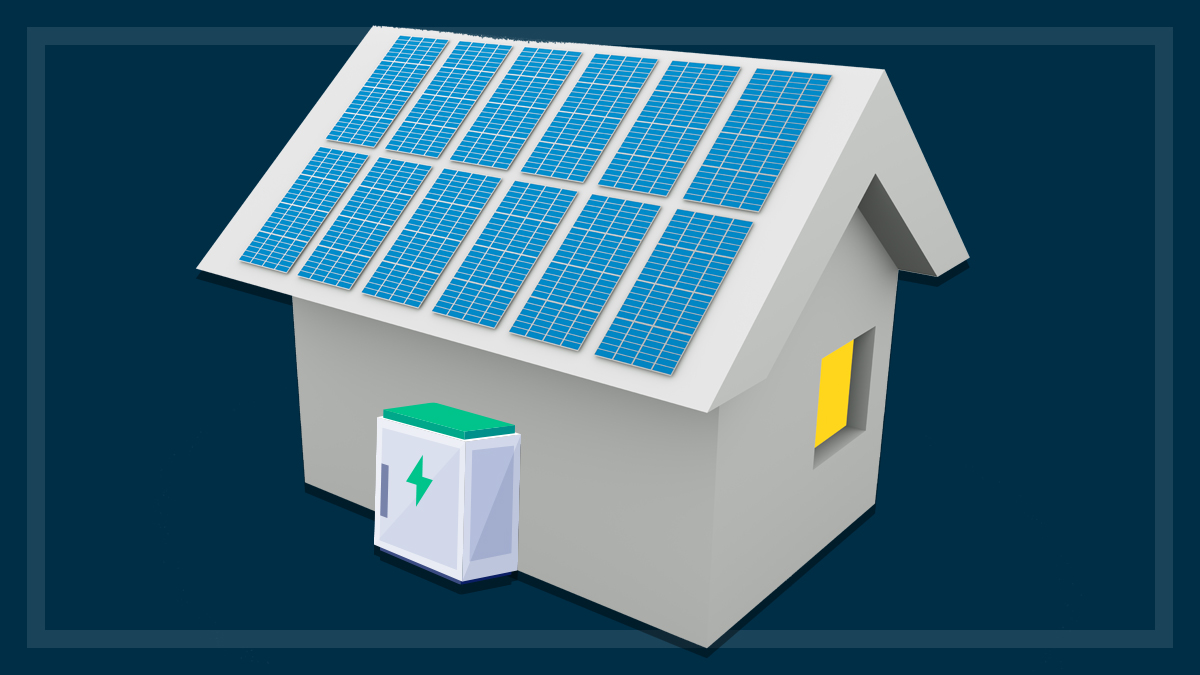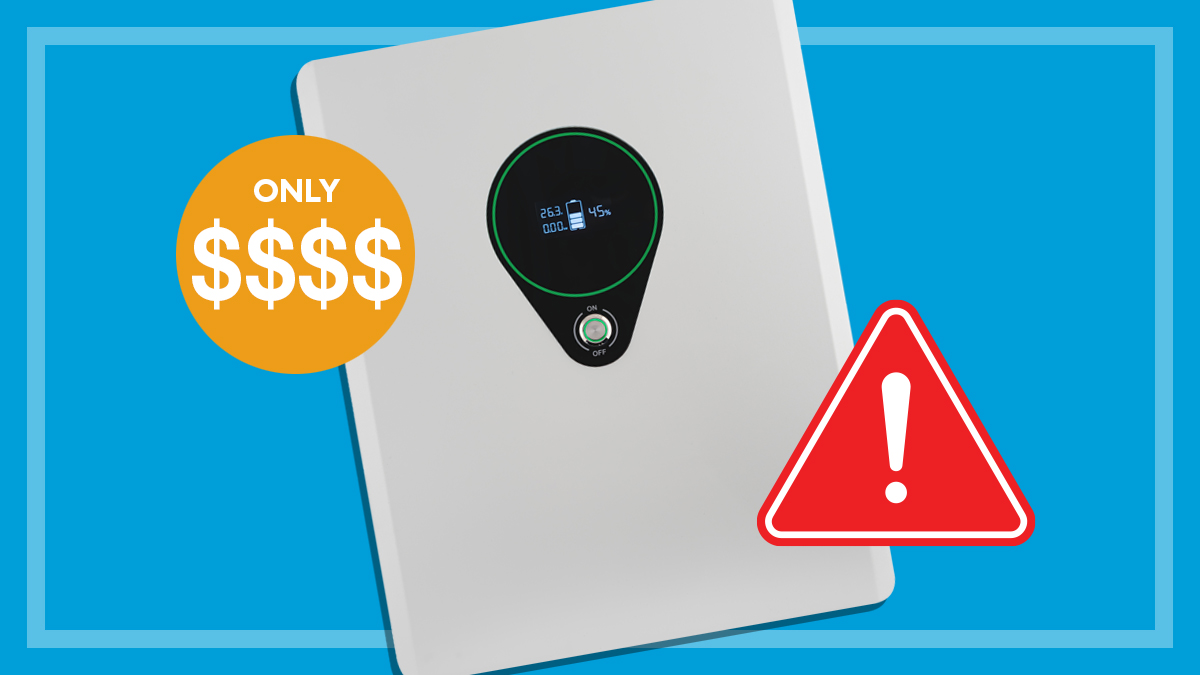Get our independent lab tests, expert reviews and honest advice.
What to know before buying a smart lock for your home
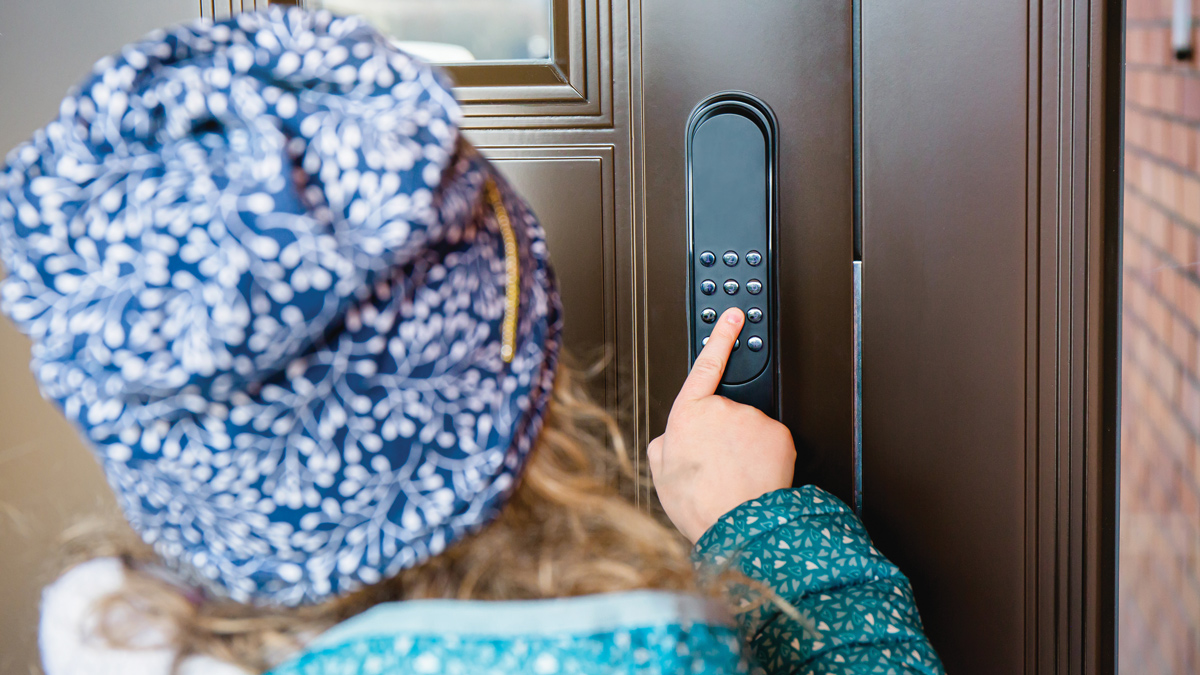
If the humble lock and key has become passé and you’re looking for an exciting new way to open a door, a smart lock may be the answer. They provide a range of online and offline options to activate the lock, including pin codes, biometrics, geofencing and even smartphone apps that connect via Bluetooth.
On this page:
- Do smart locks need an internet connection?
- Unlocking a smart lock
- Keeping the keyhole
- Smart lock security features
- Are smart locks secure?
- Design and types of smart locks
- Smart lock installation
- How do smart locks work?
They also add security and monitoring features that can help keep your home safe. But like any online device, there are some risks you have to consider before buying.
Do smart locks need an internet connection?
No, you can get smart locks with no connectivity requirements, Bluetooth, Wi-Fi or a combination of these options. However, networking adds extra features and functions that can help improve home security.
Bluetooth-enabled locks connect to an app that you can use to open the door, change settings, set up user accounts and check access logs. These tools are only available when you’re within range of the lock’s Bluetooth signal (for example, access logs are downloaded to your phone once you connect).
Wi-Fi connectivity opens up remote access so you can receive updates in real time and control the lock via remote access. This may require a Wi-Fi bridge between the lock and your home network which increases the overall cost.
We found a few models that only need Bluetooth to connect to their accompanying app during setup. After that, you can disable connectivity so the lock can only be opened via onboard controls, then reactivate it to change settings and add software updates.
Unlocking a smart lock
All smart locks on the market will open using one, or more, of these methods.
Pin code: The most common option is a PIN code, entered using a keypad or touchscreen. Some also use a PIN code in their app which connects to the lock via Bluetooth or Wi-Fi.
Biometrics: Most commonly a finger or thumbprint scanner built into the lock or accompanying app. Some smart locks also support facial recognition, mostly via a connected smartphone app, although a few models do include a built-in camera for facial recognition.
Geofencing: The lock automatically opens when your smartphone is within a certain radius of the door. This works with Bluetooth and Wi-Fi.
Key fob: A plastic dongle that you tap to open the door. This is useful to keep on hand as a back-up entry option.
Smartphone access: You can unlock the door with your phone if it has an associated app. Options include a simple unlock button, tilting the phone, tapping the lock like a key fob, a PIN code on the phone or issuing a voice command if the lock supports digital assistants like Google Home and Alexa.
Remote access: Wi-Fi-enabled locks can be unlocked remotely via an app. This is a handy back-up if someone needs to get in when you’re not around. Just make sure that you’re letting the right person in, and that they close and lock the door behind them.
Temporary access: This grants single or short-term access with a temporary code that expires after a certain number of uses or a pre-set time period.
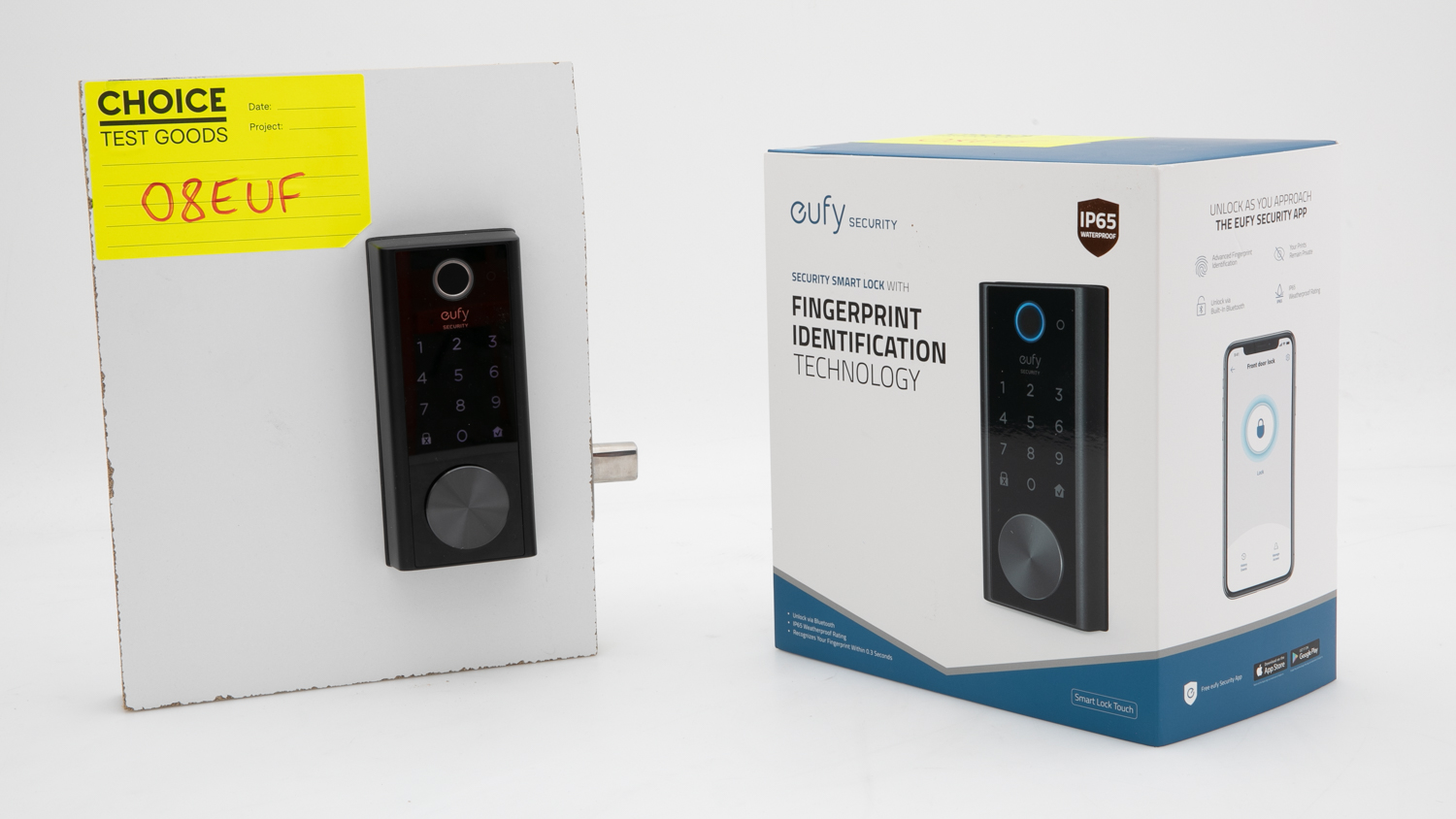
Keeping the keyhole
Most smart locks have a standard keyhole which is essentially a failsafe. The lock mechanism will still work with a key if you lose your phone, forget the code or if the lock’s smart features fail altogether, for example. Keyless units can look sleeker, but they leave you without a back-up option should the smart mechanisms fail.
Now granted, part of a smart lock’s appeal is not having to carry keys around. But that’s where a safely concealed key at home will come in handy.
Smart lock security features
The main advantage that smart locks bring to the table (or door) is a handful of security features that you won’t find on standard locks. Most require an app to set up and use.
Access logs: These help you keep track of who has come and gone – and attempted to enter – throughout the day. This feature requires a smartphone or tablet app but may not need Wi-Fi. Most Wi-Fi models can deliver live updates at home or via remote access, while Bluetooth models let you download the log to your device when connected.
Anti-peep: For pin code locks, anti-peep lets you add a random selection of numbers before and after the actual code to confuse anyone that may be watching. As long as the correct code is entered somewhere in the middle, the lock will open.
Auto lock: Smart locks automatically lock after a certain amount of time, usually five to 30 seconds. Some models let you adjust this.
Away mode: This emits an alarm and sends alerts to your phone (remote access only) if someone attempts unauthorised entry when you’re not at home.
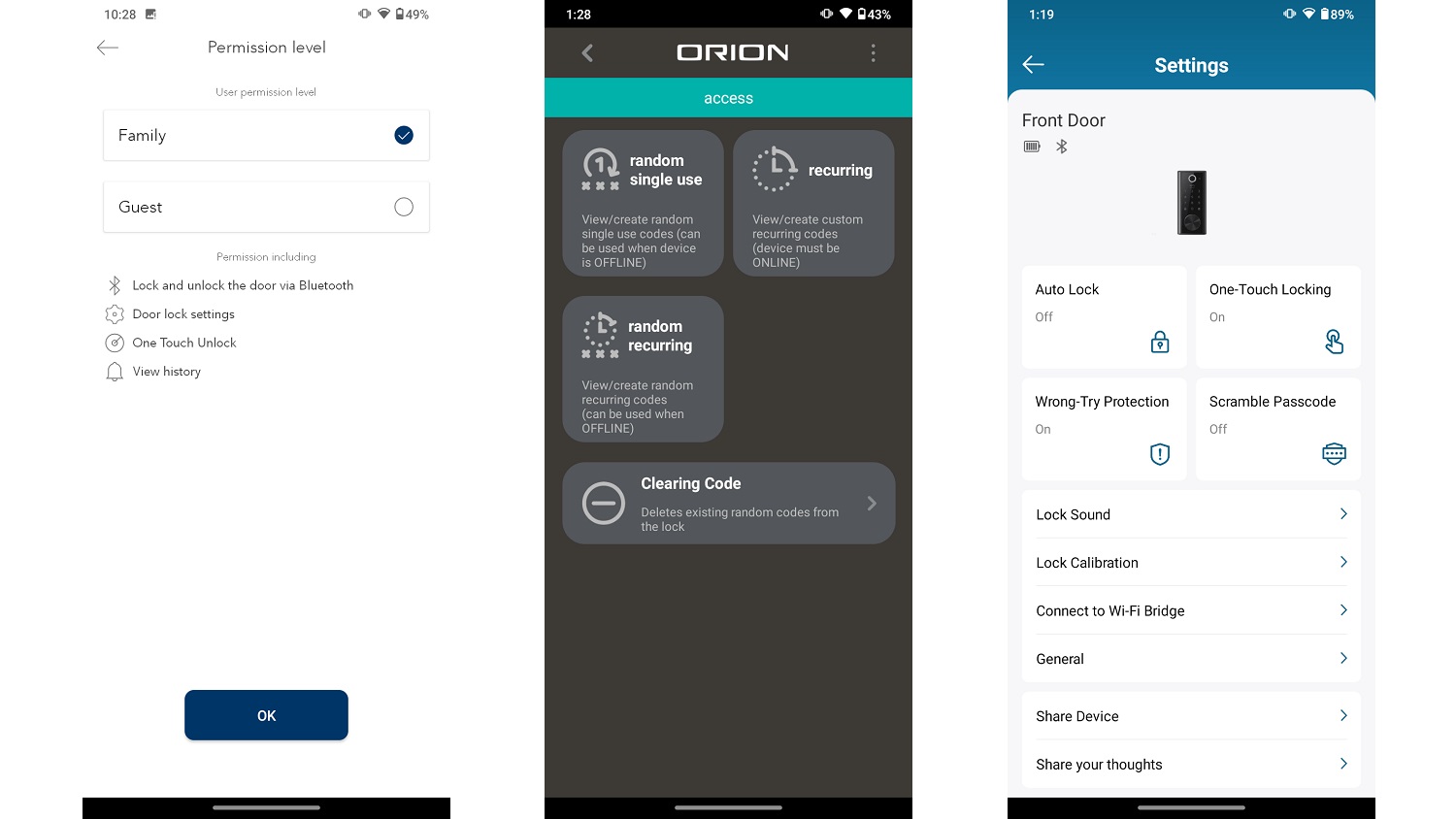
Lock mode: This disables access for all users that don’t have an admin account.
Lock down mode: This disables access after a few failed entry attempts for a set period of time. The lock down period can be adjusted.
Passage mode: This temporarily extends the auto lock period so the door remains open longer. Handy if you’re expecting a number of guests arriving within a window of time.
User accounts: An admin account is useful for managing features and functions for other people in the household, such as remote access, PIN code/biometric settings and more. For example, you could allow one user to enter via the lock’s app, while a child that’s too young for a smartphone may only have PIN code access. Admins can also view access logs for all users.
Are smart locks secure?
There are risks involved when using a connected device of any kind, including smart locks. While you’d assume hacking only applies to Wi-Fi-enabled models, Bluetooth can be compromised as well. But there are a few preventative measures you can take.
The usual internet security rules apply here. Use a unique, strong password, change it every few months and turn on two-factor authentication. Avoid common passwords like pop culture references, birthdays and pet names as these are easy to guess and don’t require any kind of hacking tools.
Enable automatic updates on the lock and app or regularly check and manually install them. These will patch vulnerabilities (among other things) that can be exploited. Also look for products that offer long support cycles – something like “We guarantee security updates for five years after launch”.
We strongly recommend using a smart lock in conjunction with a video-enabled device, such as a security camera or smart doorbell. That way, you can verify the identity of visitors via remote access and record footage if an unauthorised entry occurs.
Bluetooth risks
Bluetooth locks send data to and from a connected smartphone or tablet to authenticate user details and open the door. Without proper encryption, hackers can grab information used to open the lock as it’s travelling from your mobile device.
It’s up to the manufacturer to make sure that proper encryption tools are in place. But this information isn’t always readily available for consumers. That’s not to say your data is inherently at risk, but it’s worth contacting the company if you have any concerns.
Unlike Wi-Fi, however, criminals need to be within range of the Bluetooth signal to intercept the data. Bluetooth has a clear line of sight range of up to 240 metres (depending on the version installed on the smart lock).
Wi-Fi risks
A Wi-Fi-enabled smart lock has greater vulnerability in the sense that it can be compromised from anywhere in the world if remote access is enabled. However, users have much more control over Wi-Fi security than Bluetooth, as you can set up strong, unique passwords, enable two-factor authentication and more.
Encryption claims
Check the manufacturer’s website, product specifications or the instruction manual for encryption claims. Specific details, such as AES-256 bit, are much better than broad statements like “secure encryption” or no claims at all.
Managing old accounts
It’s important to keep on top of who has access to the smart lock, especially if it’s a former user who no longer has access to your property. This includes single access codes that are supposed to reset after the visitor leaves. It’s worth double-checking to make sure everything is completely erased.
If housemates, partners or family members have left, disable remote access (if applicable), delete their accounts then reset your password. Otherwise they may still be able to let themselves, or others, into your house. This is a particularly serious risk for victims/survivors of intimate partner and family violence.
Design and types of smart locks
The easiest way to mount a smart lock is to find one that can use the existing holes on your door. Pay attention to the setback of the hole from the edge of the door, and the diameter of the hole for the lock to fit into. The two main types of traditional lock mechanisms are:
- Deadbolt: A long, cylindrical bar that slides back and forth between the door and frame.
- Latch: A spring mechanism with a smaller, triangular-shaped bar that fits into the frame.
If you match the fitting correctly, the lock mechanism can be swapped out with little to no boring required. Meanwhile, the external parts of a smart lock, such as the handle or keypad, just bolt into the door.
Smart lock types. Image 1: Key turner (install over existing lock). Image 2: Deadbolt. Image 3: Mortice with deadbolt and latch. Image 4: Barrel only.
Key turner
This type doesn’t have an internal lock mechanism. Instead, it piggybacks onto your existing deadbolt or latch lock which stays inside of the door, and is operated with an app. The turner encases and clamps onto they key, which stays inside the lock.
Requires minimal installation, but does need an existing compatible lock in order to work. These don’t include an emergency power USB input so you’ll need to keep a back-up key on hand at all times.
Mortice
An older lock design that houses the lock mechanism in a large rectangular block called a pocket. The mechanism can be a deadbolt, latch or both in some cases. Though you can replace a deadbolt or latch with a mortice lock, carving out the extra pocket space is a lot of work.
Barrel only
Small tube locks that fit into the cylindrical bore for a deadbolt. They have a small footprint with no handle, screen, keypad or interface of any kind. Instead, these smart locks can only open with an app. While the minimalist design has a certain appeal, these locks provide very few backup entry options.
Smart lock installation
Whether you can install a smart lock yourself largely depends on how handy you are, but it should be within the capabilities of most people with a basic tool kit and YouTube access. Key turners, in particular, are specifically made for easy mounting.
Deadbolts and mortice locks should be straightforward provided the required space has already been bored out, or you’re replacing an existing lock. If not, you may need to start drilling or chipping the door away, especially if you’re installing a mortice lock in place of a deadbolt. This can be a tricky job if you don’t know what you’re doing so it may be best to hire a locksmith.
How do smart locks work?
‘Smart lock’ is a bit of a catch-all term for locks that don’t require a key for entry. We test models that have Bluetooth, Wi-Fi or both as an unlock option as these wireless connection methods tend to fit with what consumers think of when they hear ‘smart’ device.
Most have an app for unlocking the door or adjusting settings, as well as other access options such as a keypad or fingerprint scanner (biometrics). They also usually support user accounts for family or housemates, one-time access codes for guests, tradies and delivery people, access logs and remote access (Wi-Fi only).
All of the smart locks in our test are battery powered. They include a charge indicator, usually in the app, which you need to keep an eye on, as everything but the keyhole will stop working when the batteries die. You can power a few models with a power bank or smartphone via a USB input, but this is designed as a temporary measure.
All but a couple locks in our test require a smartphone during the setup process. Most don’t actually force you to use one to unlock the door once everything is installed, but you’ll miss out on a bunch of extra features included in the apps.

